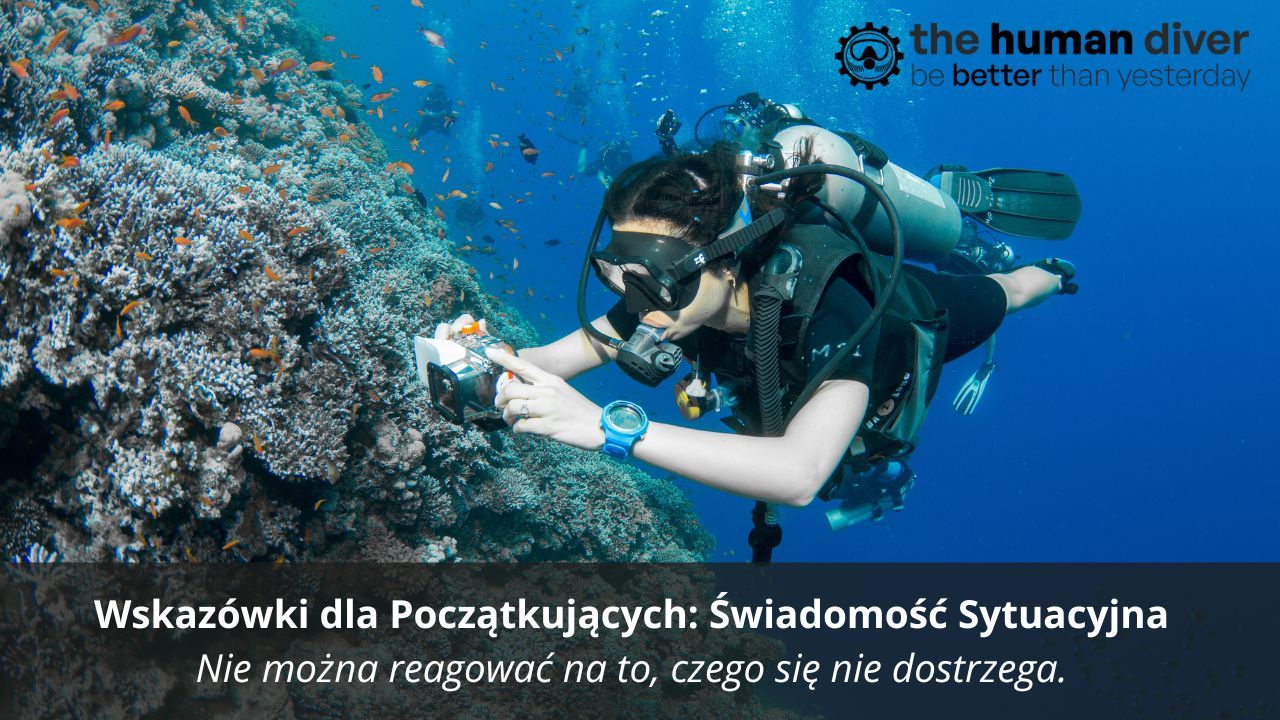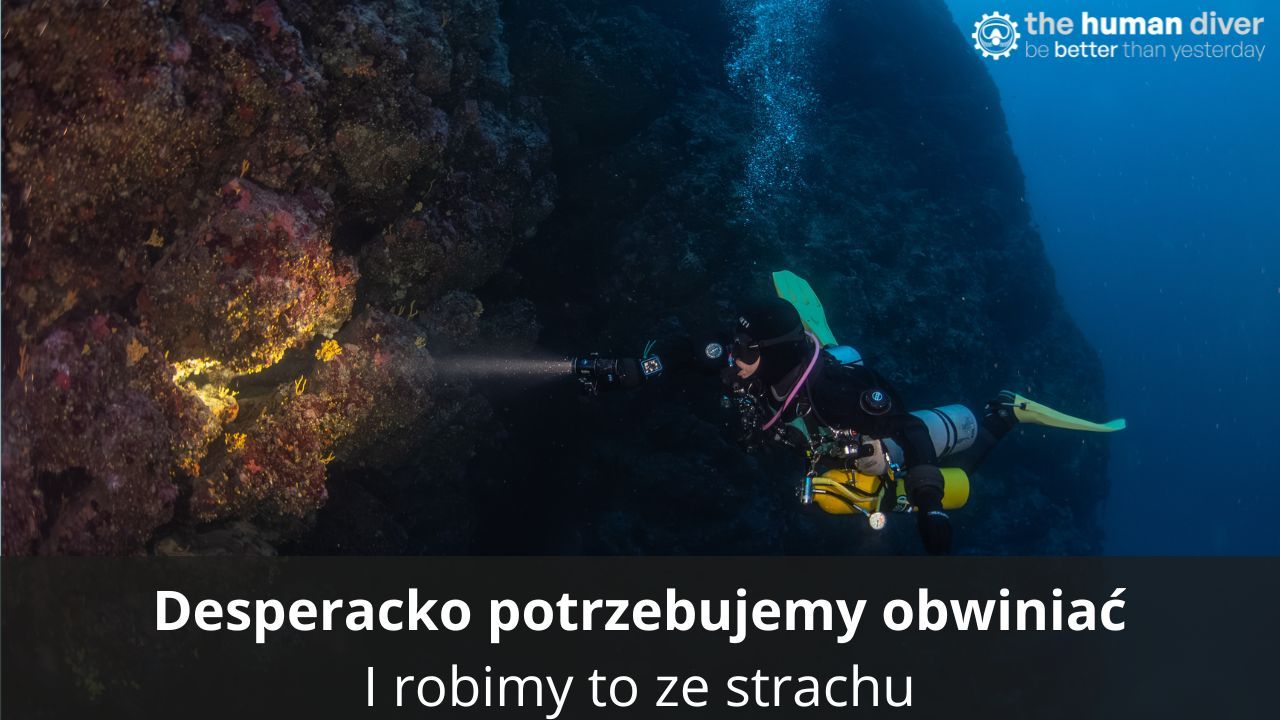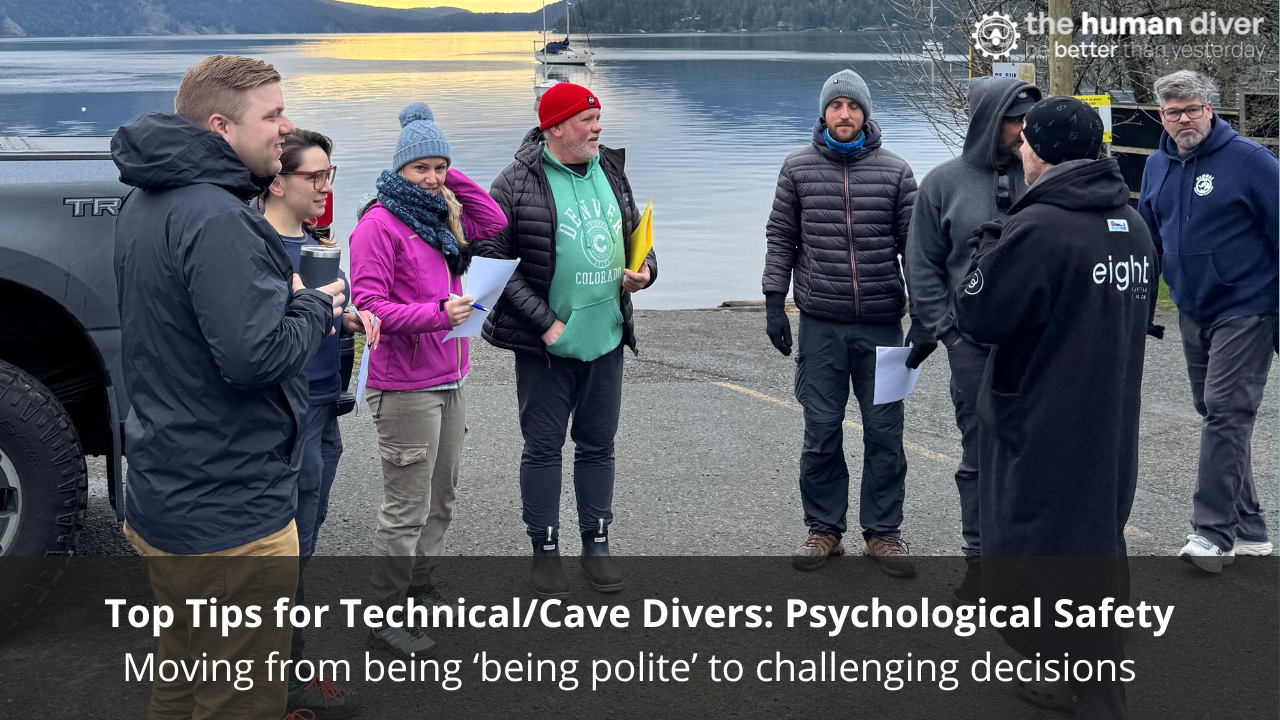
To Dive or Not to Dive? The Power of Decision Making
Mar 23, 2024Regardless of the type of diving we plan to undertake, we often find ourselves responsible for making decisions that impact safety and life. In some cases, these decisions are quite easy to make, while others will be decidedly more difficult. Especially when they concern situations where not all conditions (weather, equipment, fatigue or stress, team or partner, etc.) are as we would wish. We realize that no two dives are the same. Similar circumstances may arise, the same type of diving, but our actions will be influenced by the threats that arise or the threats that may arise.
In these situations, we must slow down and draw on our previous experience and training to make informed decisions. Our thinking must be clear and free from ambiguity and doubt. The costs incurred, self-pressure, or environmental pressure will influence our decision-making process.
Our own healthy way of thinking when "playing for everything" is to conduct a simple "pros and cons" assessment, which will help us in the decision-making process. We must be prudent and thorough in all aspects concerning diving safety, and these five elements will help us in this:
- Justification assessment
- Feasibility assessment
- Finding the right solution
- Identifying alternatives
- Choosing the right alternative

Justification Assessment: Justification involves the ability to intelligently explain why we are making a certain decision. If we are unable to justify why we are doing what we want to do in any aspect, or if we don't feel comfortable explaining the justification to any audience, then the decision should be "let it go". It is always worth remembering to consider the fundamental reasons and basic factors why you are there. This will help you make a rational decision.
Feasibility assessment: When considering feasibility, you need to first ask yourself the following questions:
- Can this dive or its component be performed without compromising safety?
- Do we have the right number of members and resources on-site that we need to carry out the dive?
- Are there suitable conditions and infrastructure, and could they change during the dive, and if so, how will it affect feasibility?
Finding the right solution: After establishing that the diving task is feasible and there is justification to dive, consult with everyone involved to discuss plans and possible outcomes. The more people involved know and understand what you are planning, the safer your dive will be.
The golden rule that every diver should remember is that just because you can do something doesn't mean you should. In other words, although you may make the ultimate decision because you are the highest-ranking or the leader, organizer of the dive, it doesn't mean that you alone should be the decision-maker. Other team members on-site may have greater knowledge on the subject or greater qualifications to make decisions. Therefore, finding the right solution must involve finding the right people to surround yourself with, along with having the appropriate equipment and resources.
Identifying alternatives: At every stage of diving, we are exposed to various risks. With proper preparation, there should be nothing that could take us by surprise. We must be prepared for every scenario and consider possibilities throughout the entire dive. We should have at least plan A, B, and C ready for use if needed. When we have options, we have greater flexibility and increase the likelihood of making the right decision.
Choosing the right alternative: With plans prepared, we must carefully analyze which one will best meet our needs during the dive and when the situation calls for the implementation of an emergency plan.

When making the decision to "dive or abort," it's important not to lose sight of the fundamental goal of diving - everyone should end the dive physically, mentally, and emotionally unharmed. There must be a clear understanding of diving requirements, and we must always consider the broader perspective. Nothing can replace realistic goals and the acceptance of expectations. Of course, we have boundaries and guidelines that help us make key decisions, so it's necessary for us to trust this process. Having alternatives and contingency plans is key to minimizing anxiety and stress when making decisions regarding dive execution. Data is important, but we must never disregard the human element - our instincts and intuitions. It's important that the decisions we make are not emotionally charged. In emergency situations, decisions made under the influence of emotions can significantly worsen the situation. Demonstrating passion is something that can motivate team members when making diving decisions; however, it should be done in a controlled manner.

It is very important for all team members to practice crew resource management, and every person during the dive should feel comfortable speaking up on any topic, even after the decision to dive has been made. The better the whole team communicates, the better the results. Excellent communication is the hallmark of a great team.
Summary
Your way of thinking is crucial when you need to make a decision. Take the time to assess the justification of the decision, whether it is defensible, whether the diving is feasible, and whether the planned goals are achievable. Then, plan the logistics and the dive. The next step is to prepare contingency plans and consider and discuss the "What if...?" situations.
Involving the entire team and including everyone participating in the project planning increases the success of finding weak points and exploring other possible solutions. Psychological safety will allow everyone involved in the project to speak up. With a safe environment, team members will be more motivated to voice their doubts and concerns but also to share their ideas and goals.
Following these simple steps will help you make decisions that can determine the success of the dive, safety, and life.

Andrzej is a technical diving and closed-circuit rebreather diving instructor. He works as a safety and performance consultant in the diving industry. He holds a degree in psychology with specializations in social psychology and safety psychology. His main interests in these fields are related to human performance in extreme environments and building high-performance teams. Andrzej completed postgraduate studies in underwater archaeology and gained experience as a person responsible for diving safety in scientific projects - DSO. Since 2023, he has been a Human Factors instructor, leading the Polish branch of The Human Factors. www.podcisnieniem.com.pl
Want to learn more about this article or have questions? Contact us.










